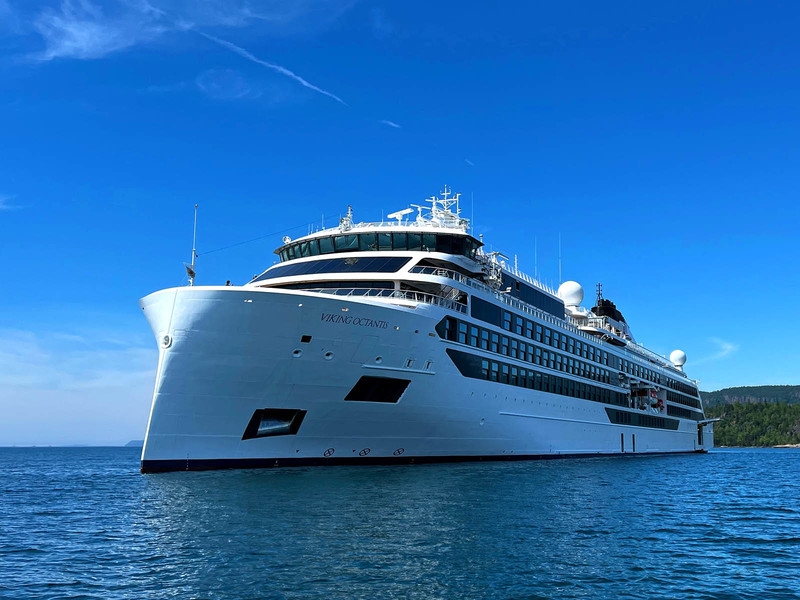Two years ago, in writing about the then-soon-to-be-demolished 1957 Advance Boiler & Tank building at 1711 S. Carferry Dr. on Jones Island, I noted that it was built during a moment of great optimism and opportunity in Milwaukee.
I also said it would soon be replaced by a major new development.
Today, I went back to the site to take a look at the construction progress of that new development: the Clinton, Wisconsin-based DeLong Co.’s agricultural maritime export facility.
The facility is not only among the first on the Great Lakes-St. Lawrence Seaway (GLSLS) system that can handle a variety of agricultural commodities via truck, rail and international vessels, it is also a rare fabric-clad building.
A 550-foot-long steel skeleton with a perimeter of concrete walls is covered in a tough material that is weather-, tear- and fire-proof.
The Wisconsin Department of Transportation estimates that the facility will bring $63 million per year in new statewide economic impact and boost exports through Port Milwaukee by as much as 400,000 metric tons annually.
The building is state of the art, and, actually, it’s two buildings. A smaller (non-fabric-clad) building will sit on the opposite side of Carferry Drive and will be connected to the main structure by a conveyor built over the road.
The small building will accommodate Union Pacific and Canadian Pacific train cars on one side and trucks on the other. The track has a capacity of 110 hopper cars.
Incoming grain will move across the conveyor to a grain lift, which will carry it to just below the peak of the main building, where it will be transported into the building by another elevated conveyor.
Starting at the far (north) end of the building, grain will be piled, moving toward the south of the building. If there are different grains inside, barriers will keep them separate.
Outside is a pair of hoppers for filtering impurities from grain and storing lower-quality grain.
When it comes time for them to move to their next destination, the grains can be pushed by front loaders into a series of grates in the floor, spaced 30 feet apart.
Those lead to an underground conveyor that connects to the crane-mounted spigot that can be opened to shoot the grain into a vessel docked along the west side of Jones Island, just south of the city’s heavy lift dock.
The building can store 45,000 metric tons of grain – that’s 1.7 million bushels – including things like DDG, or dried distillers grain, a byproduct of ethanol distillation that is used as animal feed, and in the future, soybeans and corn and other grains.
The facility can load 6,000 metric tons a day with an annual export capacity of 160,000-300,000 metric tons.
Because grain is highly combustible, there will be a fire supression system installed.
“Milwaukee is the economic engine for our state and region, and this addition to the Port’s operations will expand a strong partnership that includes The DeLong Co., the City of Milwaukee, Wisconsin agriculture and world markets,” said Mayor Cavalier Johnson, who was on Friday's tour.
“Thank you to our many partners for advancing this continued growth at Port Milwaukee. I am looking forward to this facility becoming operational in the near future.”
The $40 million facility is being funded with money from the U.S. Department of Transportation's Port Infrastructure Development Program ($15.89 million), Wisconsin Department of Transportations Harbor Assistance Program ($9.53 million across three years), Port Milwaukee ($5.7 million) and the DeLong Co. ($8.88 million).
According to Port Milwaukee, the project is the largest one-time investment in the port since the 1950s.
The facility is expected to be completed by late April and opened in May.
Born in Brooklyn, N.Y., where he lived until he was 17, Bobby received his BA-Mass Communications from UWM in 1989 and has lived in Walker's Point, Bay View, Enderis Park, South Milwaukee and on the East Side.
He has published three non-fiction books in Italy – including one about an event in Milwaukee history, which was published in the U.S. in autumn 2010. Four more books, all about Milwaukee, have been published by The History Press.
With his most recent band, The Yell Leaders, Bobby released four LPs and had a songs featured in episodes of TV's "Party of Five" and "Dawson's Creek," and films in Japan, South America and the U.S. The Yell Leaders were named the best unsigned band in their region by VH-1 as part of its Rock Across America 1998 Tour. Most recently, the band contributed tracks to a UK vinyl/CD tribute to the Redskins and collaborated on a track with Italian novelist Enrico Remmert.
He's produced three installments of the "OMCD" series of local music compilations for OnMilwaukee.com and in 2007 produced a CD of Italian music and poetry.
In 2005, he was awarded the City of Asti's (Italy) Journalism Prize for his work focusing on that area. He has also won awards from the Milwaukee Press Club.
He has be heard on 88Nine Radio Milwaukee talking about his "Urban Spelunking" series of stories, in that station's most popular podcast.







